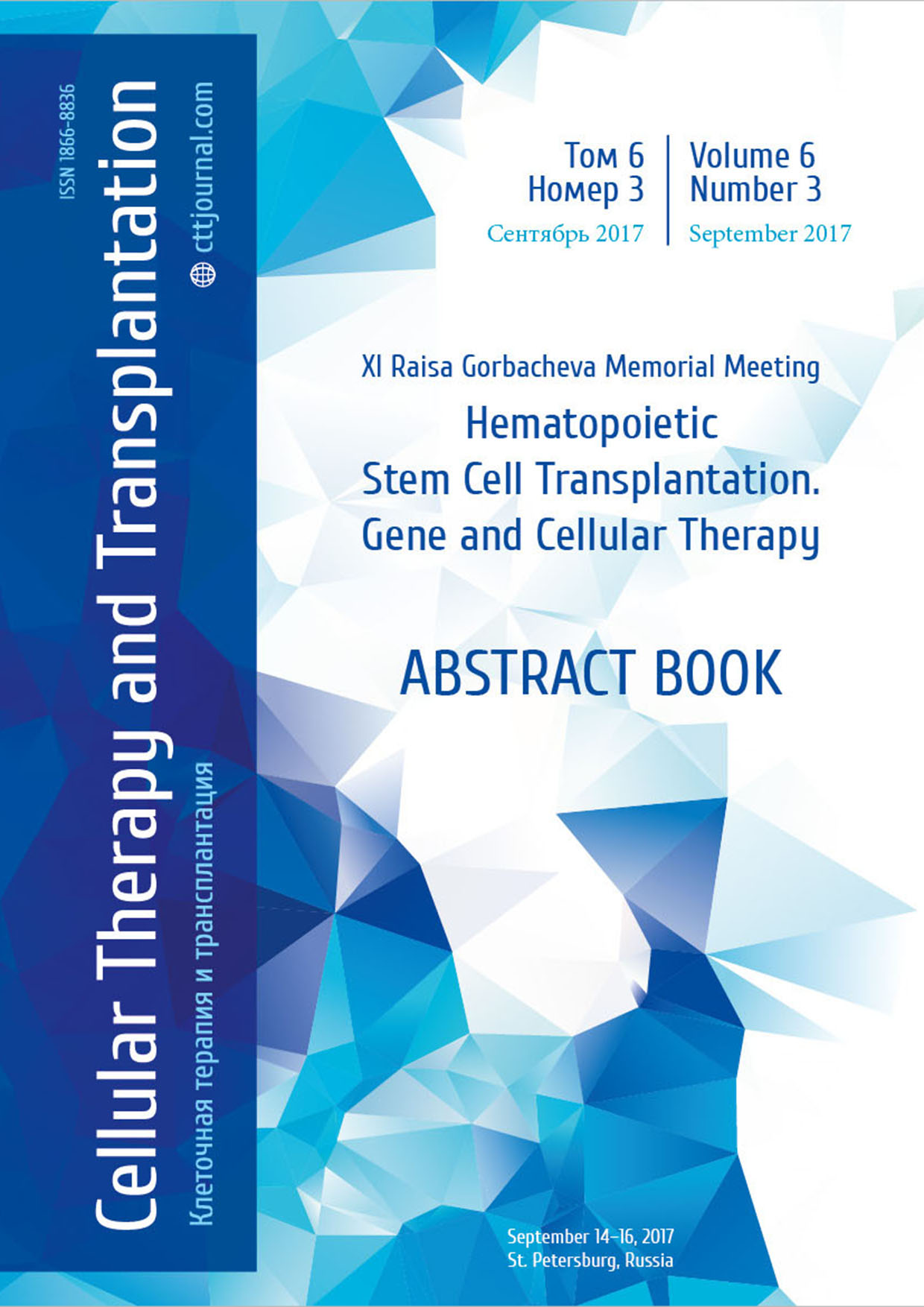Ivan S. Moiseev, Elena V. Morozova, Maria V. Barabanshikova, Tatyana A. Rudakova, Olesya U. Klimova, Nikolai Yu. Tcvetkov, Olga V. Pirogova, Evgeniya S. Borzenkova, Olesya V. Paina, Polina V. Kojokar, Kirill A. Ekushev, Tatyana A. Bikova, Elena I. Darskaya, Sergey N. Bondarenko, Ludmila S. Zubarovskaya, Boris V. Afanasyev
R. M. Gorbacheva Memorial Institute of Oncology, Hematology and Transplantation, Chair of Hematology, Transfusiology and
Transplantology, Pavlov First St. Petersburg State Medical University, St. Petersburg, Russian Federation
Summary
Introduction
Acute and chronic steroid-refractory graft-versus-host disease (srGVHD) are life-threatening complications of allogeneic stem cell transplantation. Although several treatment modalities exist for srGVHD, but there is no standard of care. One of the promising treatments is the blockade of JAK-STAT pathway. A pilot study was conducted in children and adults who developed steroid-refractory or steroid-dependent GVHD.
Patients and methods
Thirty patients (age 1-62 years, 40% children and 60% adults) were included in the study. EBMT/ELN criteria were used for steroid refractory disease (T. Ruutu et al., 2014). 11 had acute srGVHD and 19 had moderate or severe chronic srGVHD. 57% were transplanted to treat acute leukemias, 26% – other malignant diseases and 17% – non-malignant diseases. 7% were grafted from related donor, 66% from unrelated and 27% from haploidentical. Male/female ratio was 63%/37%. Ruxolinib was administered at the starting dose of 10 mg bid in adults and 0.3 mg/kg/day in children. Dose modifications were performed in patients with grade 4 hematologic toxicities. Ruxolinib was continued until complete response or absence of response in 28 days for acute GVHD and six months for chronic GVHD.
Results
Median follow-up for alive patients was 8 months (range 1.5-18). In acute GVHD complete response (CR) was observed in 9/11 patients, one patient died in partial response (PR), and one did not respond. In chronic GVHD all but one patient, in whom a CR was achieved, continue ruxolitinib. 14/19 had partial response, 4 had stable disease. Three patients relapsed while on therapy. Non-relapse mortality occurred in 3/30 patients. Overall survival was higher in chronic than in acute srGVHD patients (89% vs 64%, p=0.014). The therapy in chronic GVHD patients was relatively well tolerated, while in acute GVHD patients a substantial number of infectious complications were observed. Two severe adverse events were documented in chronic GVHD group (sepsis and myasthenia gravis), and eight in acute GVHD (5/11 patients had sepsis, one BK-virus encephalitis, one viral gastritis with recurrent bleeding and one mixed-pathogen pneumonia requiring mechanical ventilation).
Conclusion
Despite the small group size and relatively short follow-up, ruxolitinib seems a potent agent in srGVHD. Further studies are required to demonstrate whether high incidence of response will translate into survival benefit.
Keywords
Hematopoietic stem cell transplantation, graft-versus-host disease, steroid-resistant, ruxolitinib.


